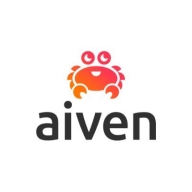

Find out in this report how the two Streaming Analytics solutions compare in terms of features, pricing, service and support, easy of deployment, and ROI.
| Product | Market Share (%) |
|---|---|
| Apache Flink | 14.8% |
| Aiven Platform | 1.7% |
| Other | 83.5% |

| Company Size | Count |
|---|---|
| Small Business | 5 |
| Midsize Enterprise | 3 |
| Large Enterprise | 11 |
Aiven for Apache Kafka is a robust data streaming platform utilized for real-time analytics, event-driven architectures, and message brokering, enhancing data processing across systems. It features scalable operations, excellent data replication, and comprehensive monitoring, significantly improving organizational efficiency and decision-making processes through high-level data management capabilities.
Apache Flink is an open-source batch and stream data processing engine. It can be used for batch, micro-batch, and real-time processing. Flink is a programming model that combines the benefits of batch processing and streaming analytics by providing a unified programming interface for both data sources, allowing users to write programs that seamlessly switch between the two modes. It can also be used for interactive queries.
Flink can be used as an alternative to MapReduce for executing iterative algorithms on large datasets in parallel. It was developed specifically for large to extremely large data sets that require complex iterative algorithms.
Flink is a fast and reliable framework developed in Java, Scala, and Python. It runs on the cluster that consists of data nodes and managers. It has a rich set of features that can be used out of the box in order to build sophisticated applications.
Flink has a robust API and is ready to be used with Hadoop, Cassandra, Hive, Impala, Kafka, MySQL/MariaDB, Neo4j, as well as any other NoSQL database.
Apache Flink Features
Apache Flink Benefits
Reviews from Real Users
Apache Flink stands out among its competitors for a number of reasons. Two major ones are its low latency and its user-friendly interface. PeerSpot users take note of the advantages of these features in their reviews:
The head of data and analytics at a computer software company notes, “The top feature of Apache Flink is its low latency for fast, real-time data. Another great feature is the real-time indicators and alerts which make a big difference when it comes to data processing and analysis.”
Ertugrul A., manager at a computer software company, writes, “It's usable and affordable. It is user-friendly and the reporting is good.”
We monitor all Streaming Analytics reviews to prevent fraudulent reviews and keep review quality high. We do not post reviews by company employees or direct competitors. We validate each review for authenticity via cross-reference with LinkedIn, and personal follow-up with the reviewer when necessary.